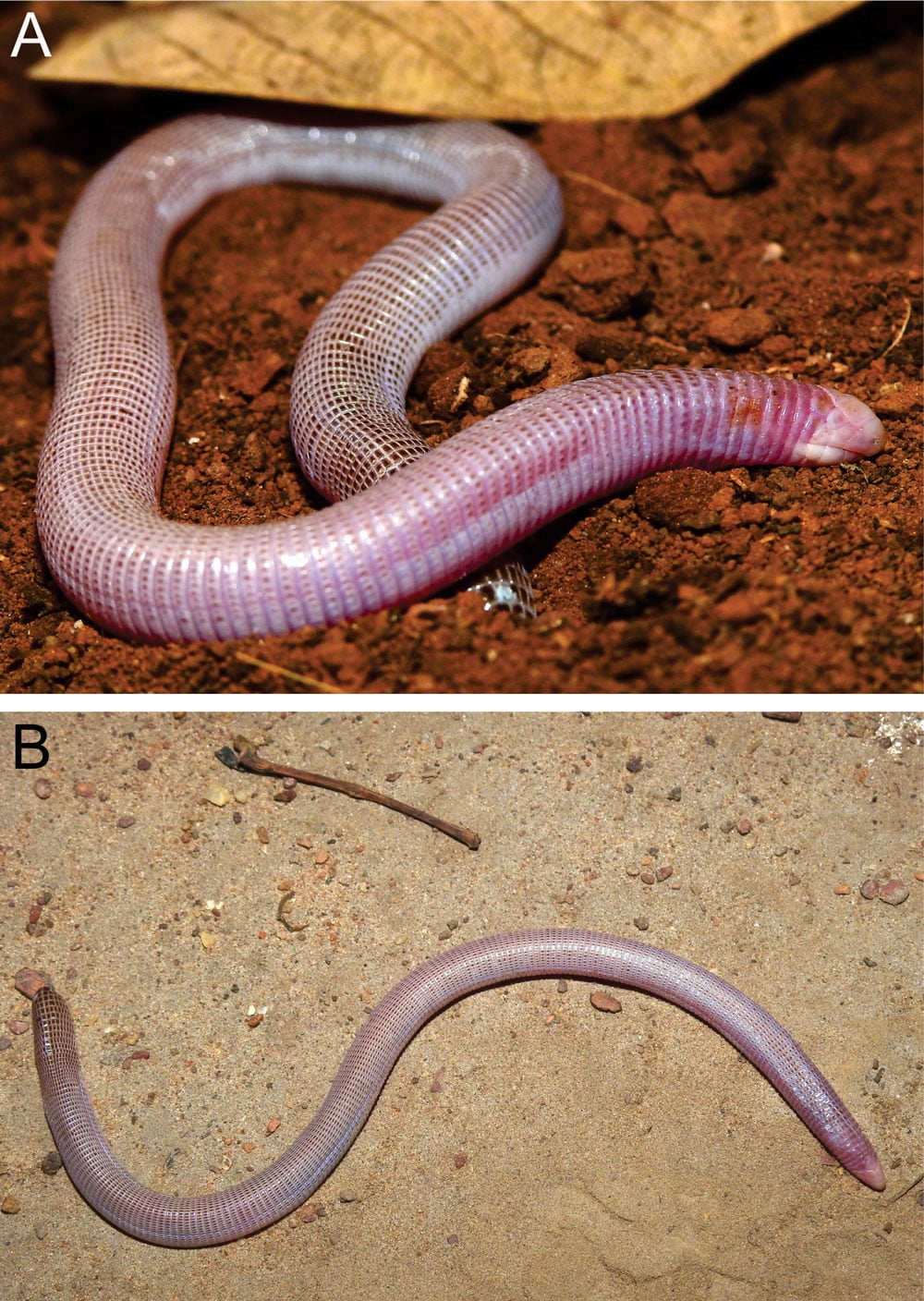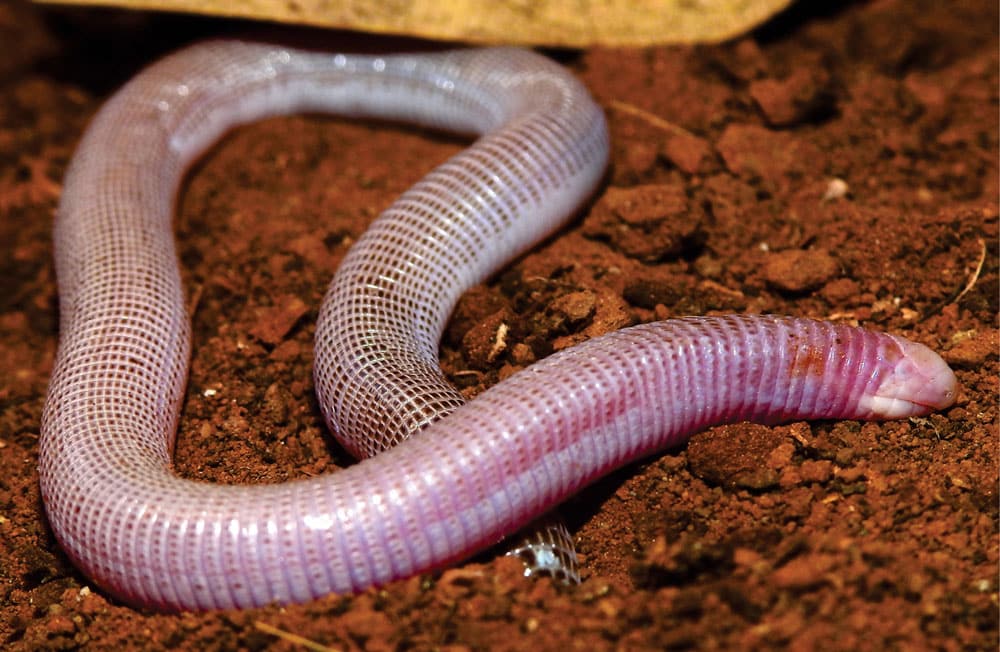Amphisbaena amethysta appears to be endemic to the Espinhaço Mountain Range, and specifically the northern portion of the mountains.
Researchers in Brazil have described a new species of Amphisbaena lizard from the Espinhaço Mountain Range in Brazil’s Bahia state. The lizard, Amphisbaena amethysta appears to be endemic to the Espinhaço Mountain Range, and specifically the northern portion of the mountains, the researchers said. it is said to live at about 1000 meters above sea level.
The researchers say that the distribution of this species, which spans some 38 kilometers, is similar to that of five other species (A. bahiana, A. longinqua, A. metallurga, A. mongoyo, and A. uroxena) of Amphisbaena. These species are also restricted to similar high altitude areas of the Bahia Espinhaço Mountain Range. The habitat includes “patches of deciduous and semi-deciduous forests” along with valleys, slopes, and gallery forests that the researchers say have flower elements that are found in the vegetation of the “Caatinga, Cerrado, and Atlantic Forest morphoclimatic domains.” There is also savannah vegetation as well as rock outcrops at the higher elevations.

Amphisbaena amethysta sp. nov. in life (not identified specimen of type series) A lateral view and B dorsal. Photograph by T.B.S.
Amphisbaena amethysta is pinkish in coloration with some slight brown colorations as well. The holotype has a snout to vent length of 233mm and a tail length of 21.24 mm. It is closely related to A. caetitensis. This is a sister species with a genetic differentiation of 6.1% for the 16S gene, the researchers wrote.
The complete paper “A new four-pored Amphisbaena Linnaeus, 1758 (Amphisbaenia, Amphisbaenidae) from the north of Espinhaço Mountain Range, Brazil” can be read on the ZooKey’s website.



